
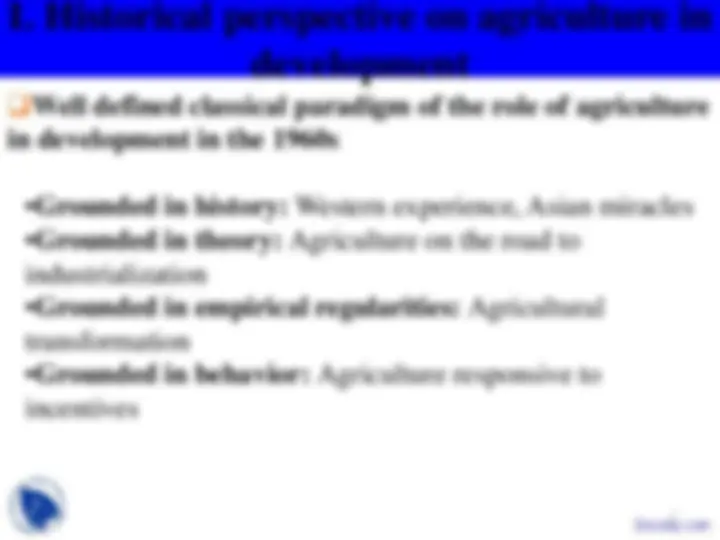
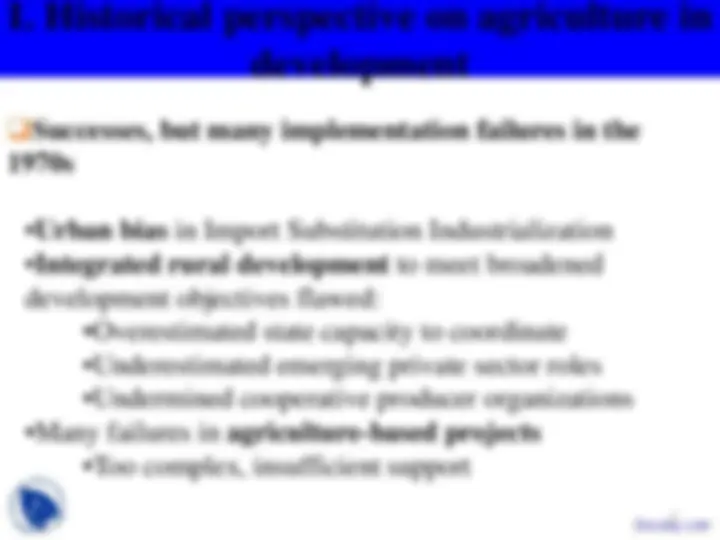
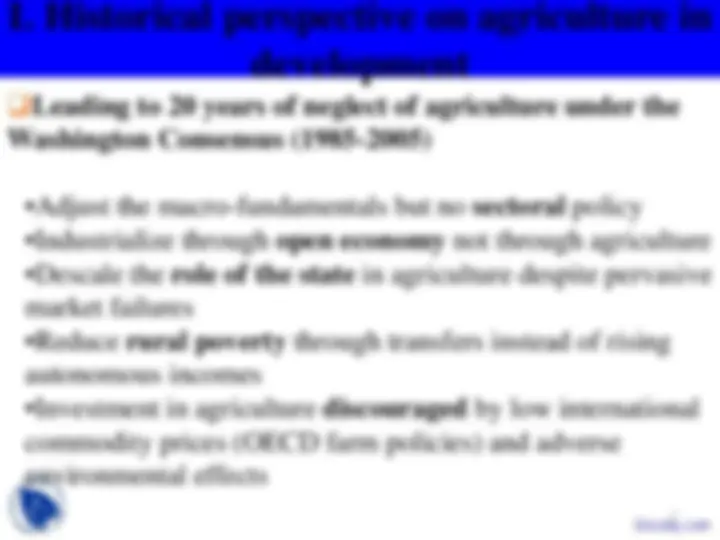
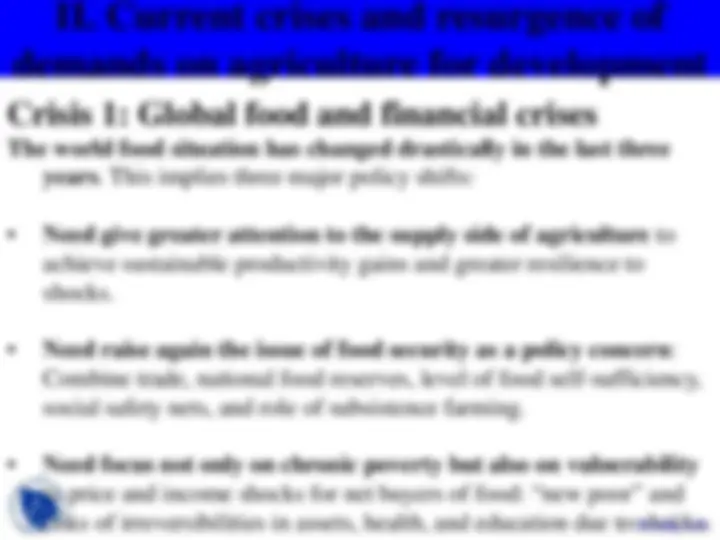
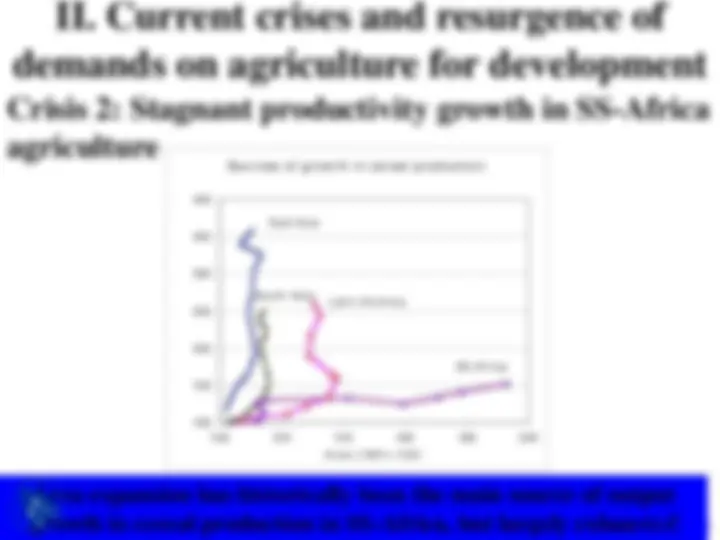
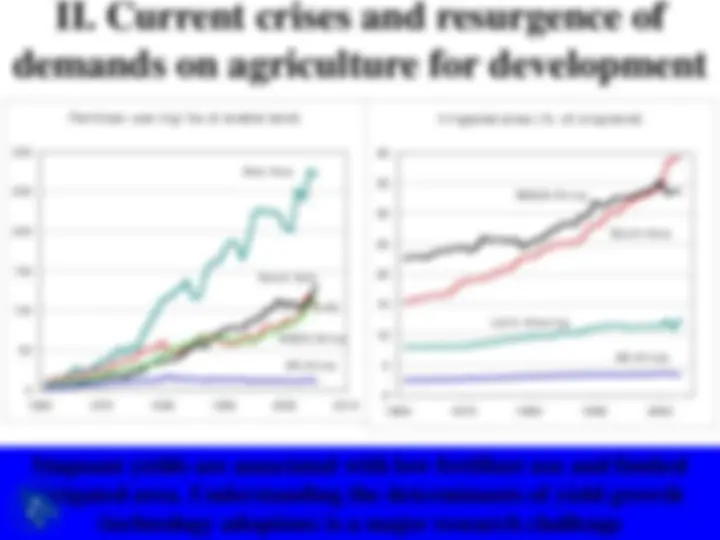
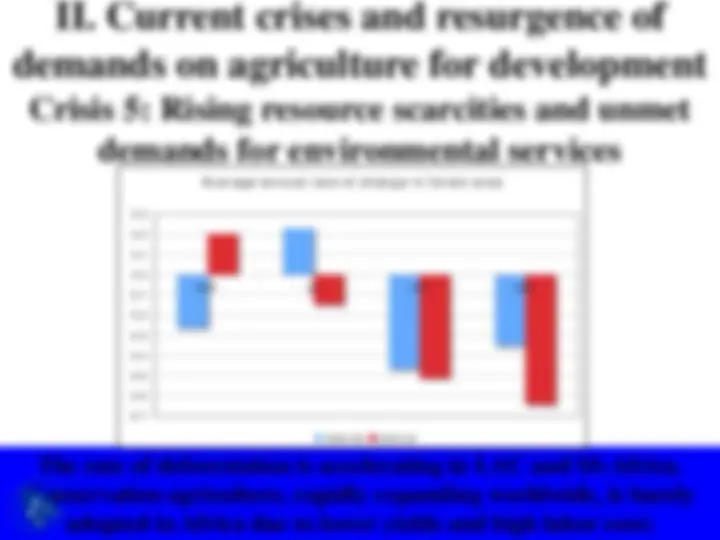
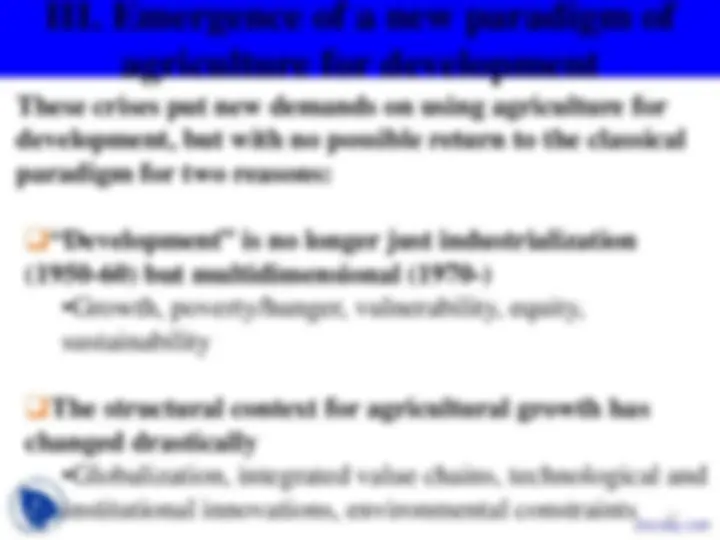
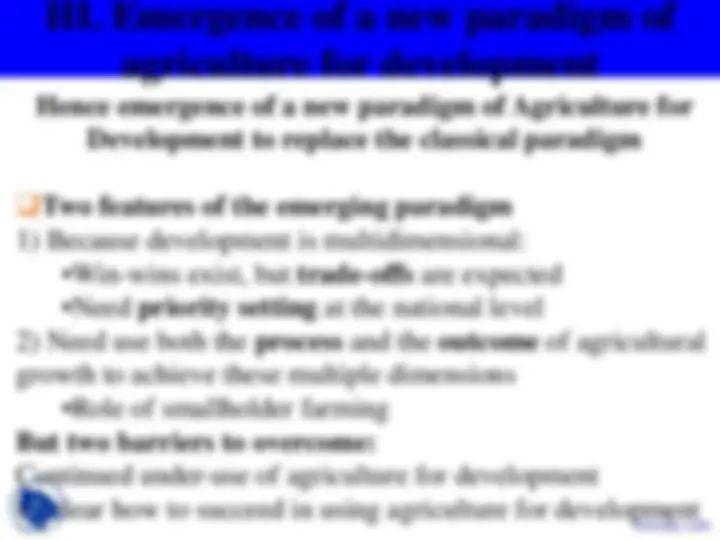
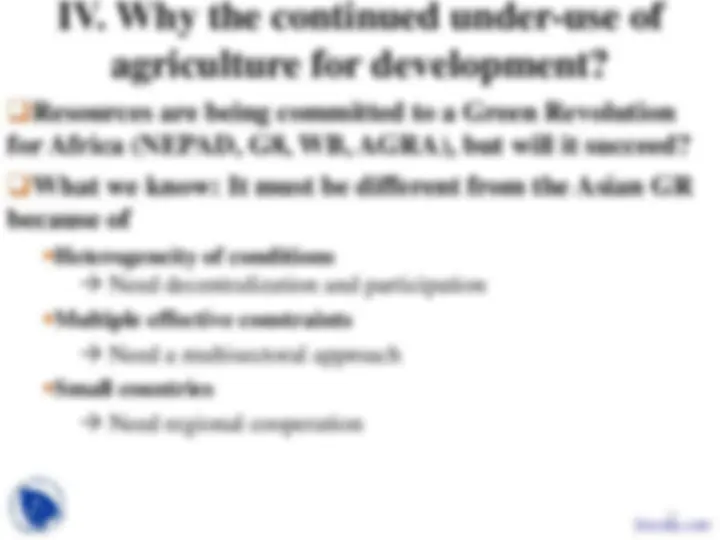
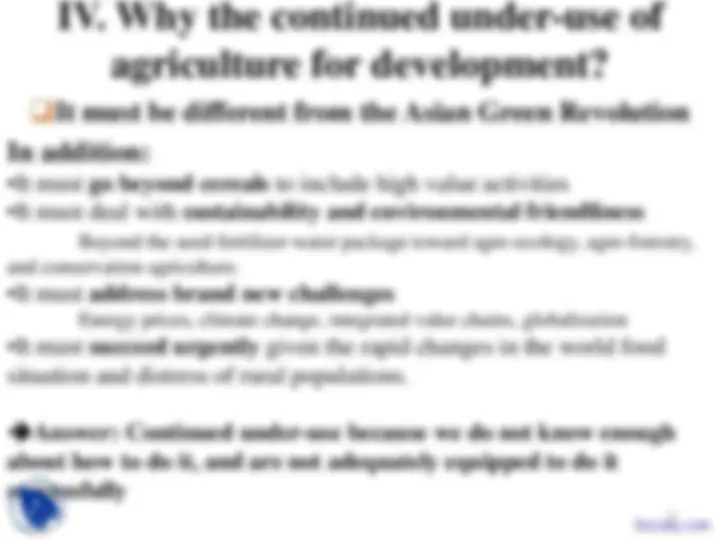
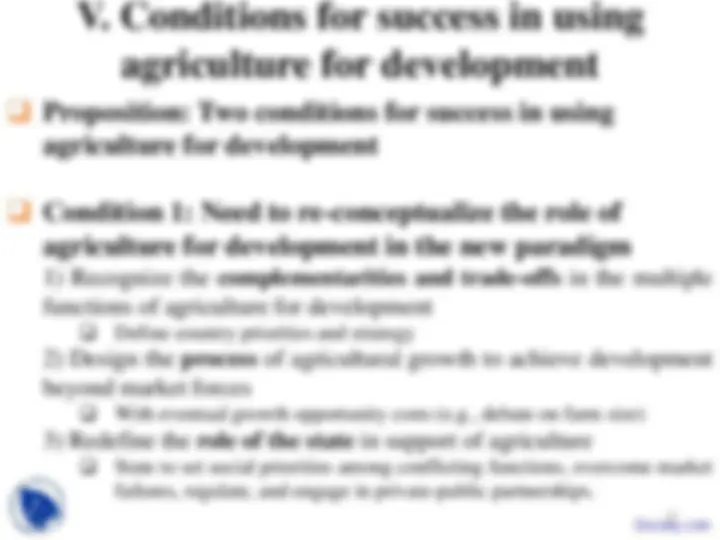
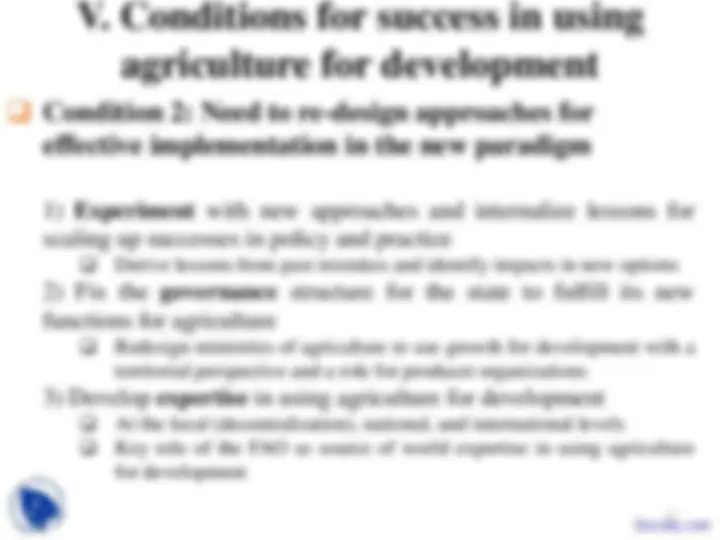
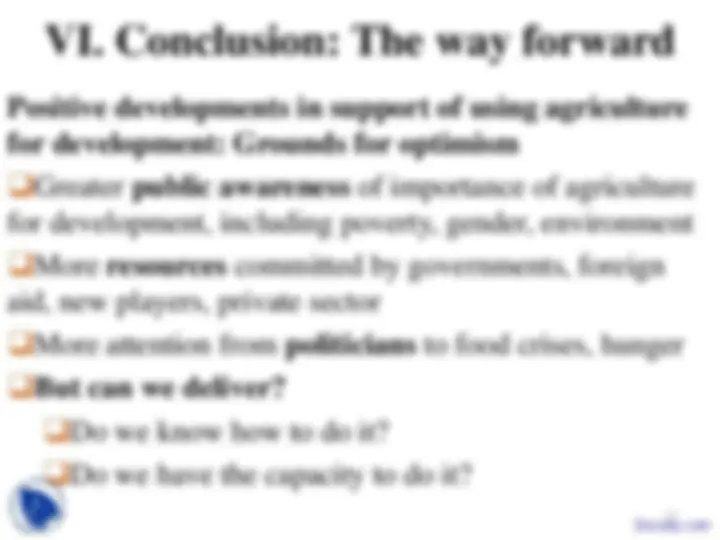
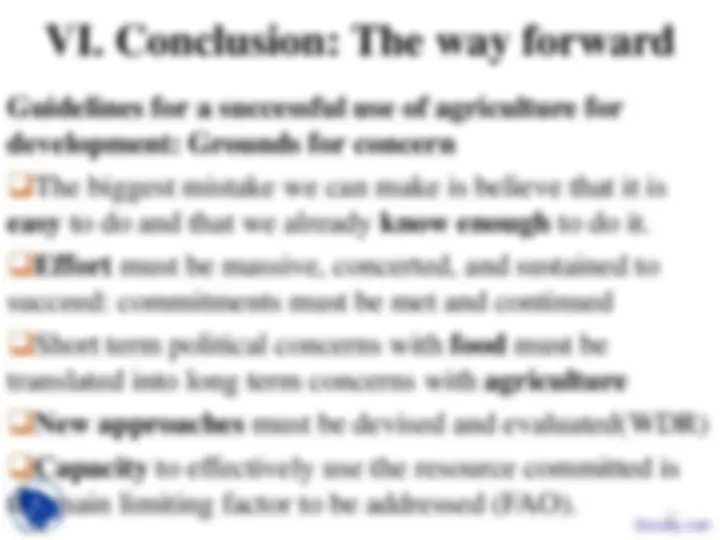


Study with the several resources on Docsity

Earn points by helping other students or get them with a premium plan


Prepare for your exams
Study with the several resources on Docsity

Earn points to download
Earn points by helping other students or get them with a premium plan
Community
Ask the community for help and clear up your study doubts
Discover the best universities in your country according to Docsity users
Free resources
Download our free guides on studying techniques, anxiety management strategies, and thesis advice from Docsity tutors
In the rural development we study the following concept:Agriculture For Development, New Paradigm, Guidelines For Success, Historical Perspective, Current Crises, Resurgence, Emergence, Conditions, Success, Agriculture
Typology: Slides
1 / 23

This page cannot be seen from the preview
Don't miss anything!
















Docsity.com
Docsity.com^2
I. Historical perspective on agriculture in development
4
Successes, but many implementation failures in the 1970s
Docsity.com
I. Historical perspective on agriculture in development
5
Leading to 20 years of neglect of agriculture under the Washington Consensus (1985-2005)
•Adjust the macro-fundamentals but no sectoral policy •Industrialize through open economy not through agriculture •Descale the role of the state in agriculture despite pervasive market failures •Reduce rural poverty through transfers instead of rising autonomous incomes •Investment in agriculture discouraged by low international commodity prices (OECD farm policies) and adverse environmental effects Docsity.com
II. Current crises and resurgence of demands on agriculture for development
7
Following 20 years of neglect, five crises put
agriculture back on the development agenda:
food insecurity and hunger
Saharan Africa agriculture
World poverty still overwhelmingly rural
Increasing rural-urban income disparities
Rising resource scarcity and unmet demands
for environmental services Docsity.com
II. Current crises and resurgence of demands on agriculture for development
8
Crisis 1: Global food and financial crises The world food situation has changed drastically in the last three years. This implies three major policy shifts:
II. Current crises and resurgence of
demands on agriculture for development
10
Fertilizer use (kg/ha of arable land)
0
50
100
150
200
250
300
1960 1970 1980 1990 2000 2010
East Asia
South Asia LAC ME&N Africa SS-Africa
Irrigated area (% of cropland)
0
5
10
15
20
25
30
35
40
1960 1970 1980 1990 2000
ME&N Africa South Asia
Latin America SS-Africa
Stagnant yields are associated with low fertilizer use and limited irrigated area. Understanding the determinants of yield growth (technology adoption) is a major research challenge Docsity.com
II. Current crises and resurgence of
demands on agriculture for development
11
Crisis 3: World poverty still overwhelmingly rural % of world poor rural by continent
0
20
40
60
80
100
LAC ECA SSA SAS MNA EAP World
Number of rural poor (1993=100)
50
60
70
80
90
100
110
120
1992 1994 1996 1998 2000 2002 2004
East Asia
Latin America
SS-Africa South Asia
75% of world poor are still rural, and rural poverty is rising in SS- Africa and South Asia: Key to meet MDG#1 Docsity.com
II. Current crises and resurgence of
demands on agriculture for development
13
Crisis 5: Rising resource scarcities and unmet demands for environmental services
The rate of deforestation is accelerating in LAC and SS-Africa. Conservation agriculture, rapidly expanding worldwide, is barely adopted in Africa due to lower yields and high labor costs
Average annual rate of change in forest area
-0.
-0.
-0.
-0.
-0.
-0.
-0.
EAP SA LAC SSA
1990-99 2000-
Docsity.com
III. Emergence of a new paradigm of agriculture for development
14
These crises put new demands on using agriculture for development, but with no possible return to the classical paradigm for two reasons:
“Development” is no longer just industrialization (1950-60) but multidimensional (1970-) •Growth, poverty/hunger, vulnerability, equity, sustainability
The structural context for agricultural growth has changed drastically •Globalization, integrated value chains, technological and institutional innovations, environmental constraintsDocsity.com
IV. Why the continued under-use of
agriculture for development?
16
Structural transformation in Asia
4.5 5.5 6.5 7.5 8. Log of GDP per capita (constant 2000 US$)
Cross-section Bangladesh Cambodia Hong Kong, China India Indonesia Korea, Rep. Malaysia Myanmar Pakistan Papua New Guinea Philippines Thailand China Vietnam Taiwan, China
China India
Malaysia Rep. Korea
Normal pattern
Pakistan
Bangladesh
Successful structural transformations in Asia Docsity.com
IV. Why the continued under-use of agriculture for development?
17
Structural transformation in Sub-SaharanAfrica
4.5 5.5 Log of GDP per capita (constant 2000 US$) 6.5 7.5 8.
Cross-section Angola Benin Cameroon Chad Cote d'Ivoire Kenya Madagascar Niger Nigeria Rwanda Senegal South Africa Tanzania Togo Zambia Zimbabwe South Africa
Nigeria
Cote d'Ivoire
Togo
Chad
Normal pattern
But agriculture is still under- and mis-used in Africa and Latin America: Labor is pushed out of agriculture without associated growth in GDP per capita
Structural transformation in Latin America andCaribbean
4.5 (^) Log of GDP per capita (constant 2000 US$)5.5 6.5 7.5 8.
Cross-section Argentina Bolivia Brazil Chile Colombia Dominican Republic Ecuador Guatemala Honduras Haiti Mexico Peru Paraguay x^ El Salvador^ Venezuela, RB
Docsity.com
IV. Why the continued under-use of agriculture for development?
19
It must be different from the Asian Green Revolution
In addition:
Answer: Continued under-use because we do not know enough about how to do it, and are not adequately equipped to do it successfully Docsity.com
V. Conditions for success in using agriculture for development
20
Proposition: Two conditions for success in using agriculture for development
Condition 1: Need to re-conceptualize the role of agriculture for development in the new paradigm